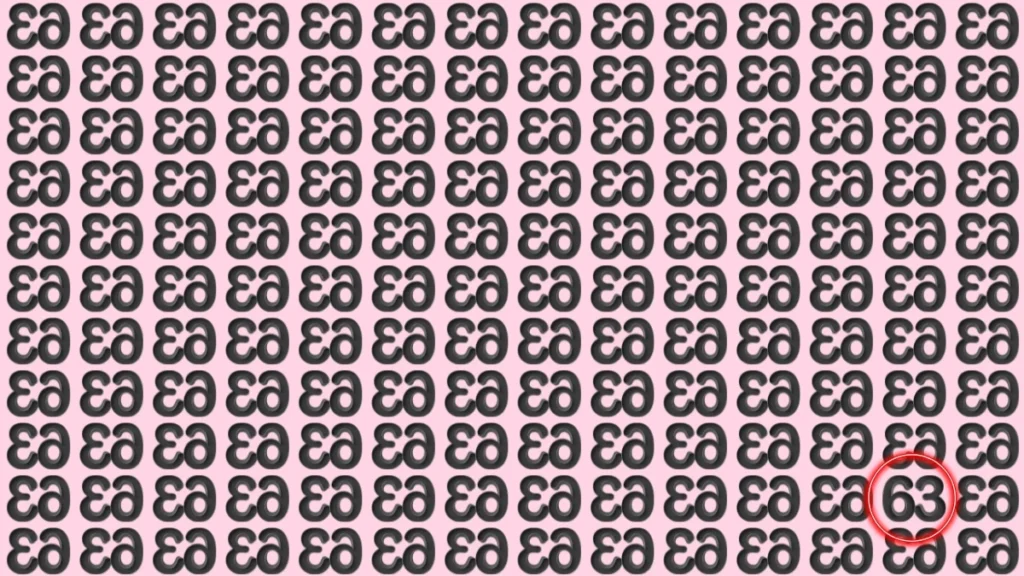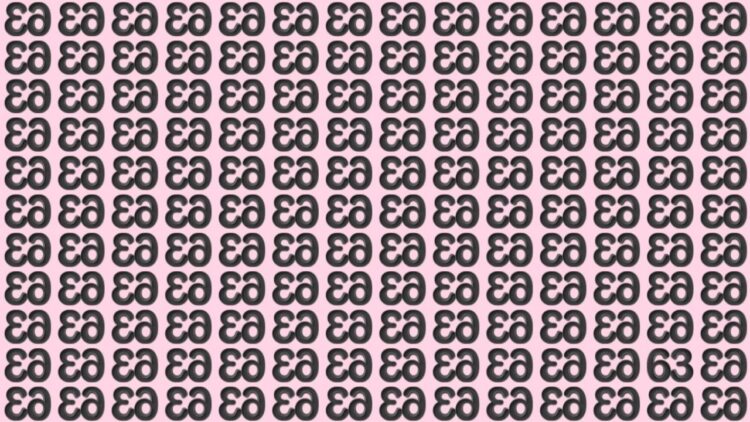Get ready to challenge your visual perception and IQ with a brain-twisting optical illusion. This exciting puzzle dares you to spot the correctly oriented number 63 hidden among a grid full of inverted versions—but you only have 6 seconds to do it!
What Makes This Puzzle So Tricky?
At first glance, the image might seem filled with identical numbers. However, the trick is that most of the 63s are upside down, creating a disorienting visual field. Your brain is wired to detect patterns quickly, but flipping the familiar digits makes it harder to spot what’s normal.
The real challenge is to identify the only number 63 that isn’t flipped, despite the distraction of its upside-down twins. This illusion puts your focus, attention to detail, and reflexes to the test.
How to Crack the Code in 6 Seconds
To beat this optical illusion challenge, here’s what you need to do:
- Scan the grid fast: Don’t overthink it. Your brain can often process visual oddities faster than conscious thought.
- Look for symmetry: Inverted 63s may look similar but their alignment will be slightly off.
- Spot the upright digits: A real 6 and 3 have distinctive curves and spacing that are missing when flipped.
Once you identify the only non-inverted 63, you’ve cracked the puzzle!
Why Are Optical Illusions Good for the Brain?
Optical illusions like this one aren’t just fun—they actually have cognitive benefits. They help:
- Improve visual-spatial reasoning
- Enhance focus and attention
- Train your brain to think quickly and efficiently
This particular illusion sharpens your pattern recognition and orientation processing, which are essential cognitive functions in everyday life.
Solution: Did You Find the Right 63?

If you couldn’t find it within 6 seconds, don’t worry. This type of visual illusion is designed to trick your brain. The correctly oriented 63 stands out only when you’re sharply focused, and your brain distinguishes the natural form of numbers.
The answer lies in observing the image carefully and identifying the orientation that feels most familiar to the eye. Once your brain catches the correctly positioned number, you’ll wonder how you missed it at all!
Quick Facts About the Optical Illusion Puzzle
| Aspect | Details |
|---|---|
| Puzzle Type | Optical Illusion / Visual Challenge |
| Objective | Spot the upright 63 among inverted ones |
| Time Limit | 6 Seconds |
| Brain Skills Tested | Observation, Focus, Pattern Recognition, Orientation |
| Difficulty Level | Moderate to High |
This optical illusion challenge is a great way to stretch your brain muscles and test how fast you can spot visual inconsistencies.
Whether you nailed it within the 6-second limit or took a bit longer, the key takeaway is how powerful and tricky visual perception can be.
Regularly attempting such puzzles can sharpen your mind, increase your attention to detail, and offer a quick, enjoyable mental workout. So keep practicing—who knows what your eyes might catch next time!
FAQs
What makes optical illusions like this so difficult?
They confuse your brain by presenting familiar patterns in unfamiliar ways—like flipping numbers—making it harder to recognize the obvious.
Can solving these puzzles improve my IQ?
While they don’t increase IQ directly, they boost cognitive skills such as focus, processing speed, and pattern recognition.
What’s the best way to train for these types of puzzles?
Practice regularly with visual puzzles, spot-the-difference games, and mind-bending illusions to strengthen your visual analysis skills.

